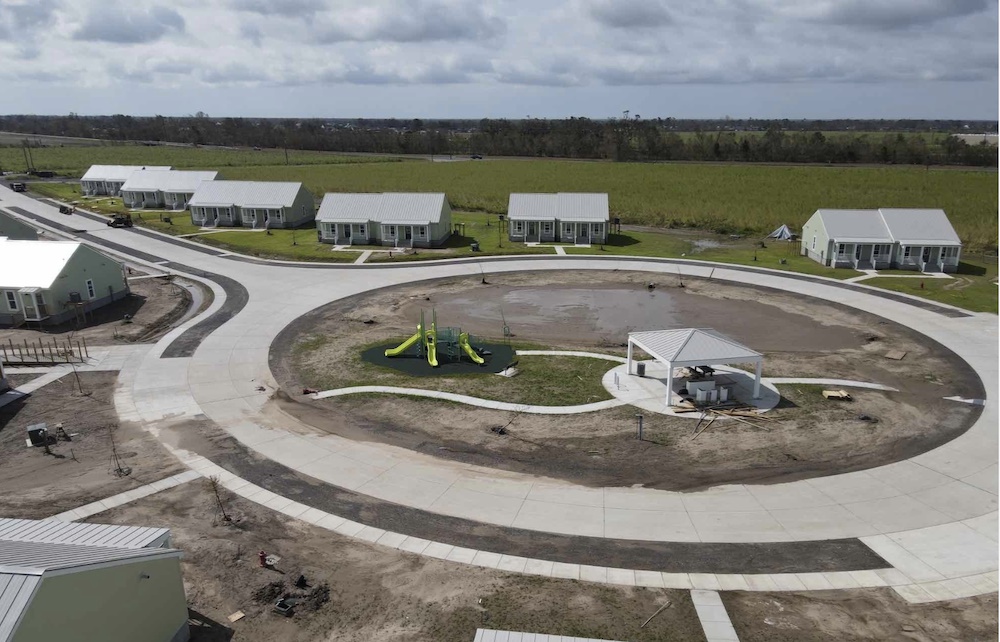In California, a NeighborWorks network organization is developing San Francisco's first fully electrified affordable housing building while another helps drought-stricken communities when their wells run dry. In Minnesota, a network organization is prioritizing solar to help cut utility costs, both for the nonprofit and for the residents who live in their buildings. Meanwhile, in the South and Northeast, network organizations are creating buildings and homes that are resistant to flooding.
Innovation is everywhere. But there's more to learn, especially when it comes to securing funding that can help get new projects, literally, off the ground.
That's why NeighborWorks has introduced a new class, to be held at the August NeighborWorks Training Institute (NTI) in Chicago. The two-day, Monday/Tuesday course, "Climate Mitigation: A Toolkit for Community Developers," is a deep-dive training resource intended to complement the Aug. 23 symposium, "Climate Resilience: Fostering Wealth, Health and Sustainability in Communities of Color." The course is designed to help participants understand the business case – and the mission case – for climate resilience.
There's a new landscape when it comes to community development, with state, federal and philanthropic dollars dedicated to projects that promote climate resilience. The course and the symposium are meant to help community developers keep up with the latest developments in the field and to keep them from missing out on these critical opportunities, says Cormac Molloy, senior manager of Curriculum & Training.

At the same time, Molloy says, funders are increasingly looking to support organizations that have clear "net zero" standards. There is also a renewed focus on strategies that center the most marginalized communities. "There is change happening here."
The new NeighborWorks course will look at specific lines of business, at state energy policies, and more. Eric Hangen, who works with Climate Finance Initiatives at the Center for Impact Finance, University of New Hampshire, will lead the course. There are unprecedented federal resources available for climate resilience in both the Inflation Reduction Act and the Bipartisan Infrastructure Law, Hangen explains. "We will be reviewing these resources, some of which are targeted for disadvantaged communities, focusing on how community developers can utilize them."
By the end of the course, participants should be able to:
• Make the mission and business case for why their organization should engage in climate resilience (both mitigation and adaptation) as a core part of its work.
• Evaluate their organization's existing skills, capacities, relationships and business lines for opportunities to integrate climate resilience work.
• Identify federal funding resources, partner organizations and information sources that could support their work.
Molloy says the hands-on course teaches participants how to do the math, looking at the economics of rooftop and community solar generation, electric home conversions, green rehab and more. But climate resilience goes beyond energy, he adds.
"In my nine years at NeighborWorks, one of the most critical emerging topics I've seen is disaster resilience," Molloy says. "Our organizations are rebuilding communities devastated by wildfires, responding to drought, and recovering from hurricanes. All of those organizations are doing climate work."
A disproportionate amount of climate impact is felt by communities of color, and low-income communities and communities of color are disproportionally impacted by the ways we produce energy. The Fourth National Climate Assessment finds that these communities are more vulnerable to climate events, air pollution and energy cost burdens.
This course will focus on critical investments to address these impacts through a range of interventions. Course participants will examine resources to update and save on energy generation, opportunities to reduce "heat islands," and tax credits and grants to modernize appliances and energy sources. Many of these resources are targeted towards low-income communities and communities of color, which experience acute climate impact.
Says Molloy, "This new course and the symposium allow will help practitioners to take advantage of new tools to build community resilience, support sustainability, mitigate harms for vulnerable communities, and access new sources of capital. We hope you'll join."

